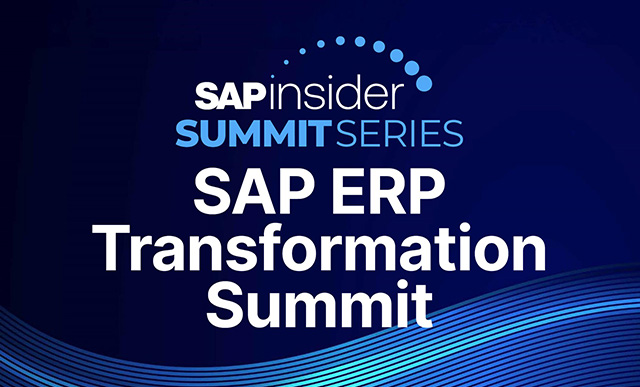SAP Cash Management
Filter By
Browse By
- SAP Analytics and AI
- SAP Application Development and Integration
- All SAP Application Development and Integration
- SAP ABAP
- SAP ABAP Development Tools
- SAP ABAP Test Cockpit
- SAP API Management
- SAP BAPI
- SAP Basis
- SAP BRF
- SAP Business Application Studio
- SAP CMS
- SAP Design Studio
- SAP Development Tools
- SAP DevOps
- SAP EAI
- SAP EDI
- SAP Extension Suite
- SAP Fiori
- SAP Fiori Elements
- SAP Integration Suite
- SAP Low Code Application Development
- SAP Low Code Automation
- SAP Netweaver
- SAP Release Management
- SAP UI5
- SAP Web Application Server
- SAP Web IDE
- SAP Business Process Management
- SAP Center of Excellence
- SAP CIO
- SAP Customer Experience
- SAP Data and Data Management
- All SAP Data and Data Management
- SAP BW
- SAP BW/4HANA
- SAP Crystal Reports
- SAP Data Archiving
- SAP Data Center
- SAP Data Governance
- SAP Data Integration
- SAP Data Migration
- SAP Data Quality
- SAP Data Services
- SAP Data Strategy
- SAP Data Visualization
- SAP Data Warehouse Cloud
- SAP DMS
- SAP Document Control
- SAP EIM
- SAP ETL
- SAP ETL Tools
- SAP HANA
- SAP HANA Administration
- SAP HANA Deployment Infrastructure
- SAP HANA Studio
- SAP Master Data
- SAP Master Data Governance
- SAP MDM
- SAP Enterprise Architect
- SAP Enterprise Asset Management
- SAP ERP
- SAP Finance
- All SAP Finance
- SAP Accounting
- SAP AR AP
- SAP Asset Accounting
- SAP Billing Systems
- SAP BPC
- SAP BRIM
- SAP Cash Management
- SAP Central Finance
- SAP Controlling
- SAP COPA
- SAP Cost Center Accounting
- SAP Currency Risk
- SAP e-invoicing
- SAP FICO
- SAP Finance Automation
- SAP Advanced Financial Closing
- SAP Financial Consolidation
- SAP Financial Planning
- SAP FX Risk
- SAP General Ledger
- SAP Global Tax Management
- SAP Hyperion
- SAP Order to Cash
- SAP Payment Processing
- SAP Profitability Analysis
- SAP Rebate Management
- SAP S/4HANA Finance
- SAP SWIFT Compliance
- SAP Treasury Management
- SAP Universal Journal
- SAP Governance Risk and Compliance
- SAP Human Capital Management
- SAP Intelligent Technologies
- SAP Platform and Technology
- All SAP Platform and Technology
- SAP Business Technology Platform
- SAP Cloud
- SAP Cloud Connector
- SAP Cloud Integration Platform
- SAP Cloud Migration
- SAP Cloud Platform
- SAP Cloud Providers
- SAP Cloud Strategy
- SAP Digital Signature
- SAP Container Platform
- SAP HANA Enterprise Cloud
- SAP Digital Asset Management
- SAP Smart Forms
- SAP HEC
- SAP Digital Integration Hub
- SAP Hyperscalers
- SAP Infrastructure
- SAP Messaging
- SAP Quality and Testing
- SAP Security
- SAP Spend Management
- SAP Supply Chain Management
- All SAP Supply Chain Management
- SAP APO
- SAP Asset Management
- SAP Business Network
- SAP Digital Manufacturing Cloud
- SAP Digital Twin
- SAP EWM
- SAP IBP
- SAP Inventory Management
- SAP Label Printing
- SAP Logistics
- SAP Manufacturing
- SAP Manufacturing Automation
- SAP MES
- SAP MII
- SAP MM
- SAP MRO
- SAP MRP
- SAP Order Management
- SAP Plant Maintenance
- SAP PLM
- SAP Production Planning
- SAP S&OP
- SAP SD
- SAP SPM
- SAP Supply Chain Planning
- SAP Track and Trace
- SAP Transportation Management
- SAP System Administration
What Is SAP Cash Management?
SAP Cash Management provides a comprehensive overview of an organization’s cash flow by processing and analyzing all cash and bank transactions. This includes payments for supplier invoices, sales receipts, stand-alone payments, and unallocated payments/receipts. SAP Cash Management also allows for analysis of financial transactions over a given period, providing vital insights into liquidity.
What Is SAP Cash Management?
SAP Cash Management provides a comprehensive overview of an organization’s cash flow by processing and analyzing all cash and bank transactions. This includes payments for supplier invoices, sales receipts, stand-alone payments, and unallocated payments/receipts. SAP Cash Management also allows for analysis of financial transactions over a given period, providing vital insights into liquidity.
For businesses looking to streamline their financial operations, SAP Cash Management provides critical functionality for managing cash flow, including analyzing financial transactions and ensuring on-time availability of funds. There are three components included in SAP Cash Management powered by SAP HANA: cash operations, liquidity management, and bank account management. These components allow organizations to streamline order-to-cash processes, improve liquidity, and enhance visibility into cash movements.
List SAP Cash Management core capabilities include:
- Managing bank account relationships
- Cash flow and liquidity reports with a comprehensive overview of your company’s financial position
- Maintaining accurate liquidity in the business
- Analyzing financial transactions for a given period
- Generating reports on cash position receipts and disbursements
- Automating payments and collections processes
Key Considerations for SAPinsiders
Consider SAP Cash Management needs as a part of a move to SAP S/4HANA. By leveraging SAP Cash Management with SAP S/4HANA, organizations can generate a complete view of cash position and liquidity, empowered by the modern technical architecture of SAP S/4HANA. The ability to track, trace, and reconcile payments in real-time provides enhanced visibility into cash movements, allowing businesses to better forecast and budget for future expenses. Finance and accounting managers can use this information to make informed decisions about cash management and ensure that adequate funds are available as needed.
Implement SAP Cash Management in SAP S/4HANA as a sidecar option to help determine a roadmap. In this interview with SAPinsider, Natasha Doerksen of Cameco talks about her company’s SAP Cash Management implementation journey.
Prioritize opportunities to lower costs and increase operational efficiency with cash management automation. The way companies are leveraging cash management, bank community, and banking communications to address issues such as lowering bank fees has become more complex. By automating cash management functionality, including payment processing and reconciling supplier statements, businesses can reduce the time and effort required to manage their finances.
479 results
-

Improved Customer Experience Through Billing Process Automation with Redwood’s RunMyJobs
Reading time: 2 mins
Utility companies face challenges in managing critical operations while ensuring business growth and customer satisfaction, but digital transformation through workload automation, such as Redwood’s RunMyJobs platform, can enhance efficiency, reduce errors, and improve service delivery, as demonstrated by the successful case studies of Anglican Water and FortisBC.
-

Unlocking Tools to Combat Tariffs
Reading time: 3 mins
The imposition of new tariffs has forced companies to rethink their financial strategies and supply chains, prompting proactive measures like enhanced receivables management and automation through partnerships with firms like BlackLine to adapt swiftly and maintain compliance in an uncertain economic landscape.
-

- SAP S/4HANA Finance
 Premium
Premium
Proven Techniques to Optimize the Accounts Receivables Process
Click Here to View Session Deck This session walks through four essential practices to increase the efficiency of accounts receivables management, including insight into: What’s new with SAP S/4HANA, AI-powered cash application, including the advanced rules engine, with SAP Cash Application software, lessons to streamline various accounts receivables processes, from tracing open items to checking...…
-
-

 Premium
Premium
Use Reconciliation Account Determination with a Special G/L Indicator for More Flexible Invoicing
Reading time: 11 mins
The author demonstrates how to optimize reconciliation account determination. He introduces the fundamentals of reconciliation account determination, special G/L indicator configuration, and manual adjustments. With examples, he shows how to use reconciliation account determination with a special G/L indicator in the FI-A/R module. Using reconciliation account determination, you can post customer invoices to a reconciliation...…
-

 Premium
Premium
Special G/L Indicator Gets a New Use in Release 4.7
Reading time: 11 mins
In the many years I have been consulting in the FI area, almost every U.S. client I have worked with has had a common issue – 1099 MISC reporting. The question they have had is how to deal with data outside their SAP system that is subject to 1099 MISC reporting. In the many years...…
-

 Premium
Premium
Prepare to Keep Your SAP Systems in Top Shape with Business Process Monitoring
Reading time: 10 mins
ManagerGain insight into the prerequisites for integrating business process monitoring into SAP Solution Manager 7.0. To ensure a smooth, successful, and error-free business process monitoring integration in SAP Solution Manager, it is important that you meet all these prerequisites. Key Concept Business process monitoring involves a proactive and process-centric approach to monitoring the core business...…
-

 Premium
Premium
Oil and Gas Industry Spotlight: A Conceptual Look at How to Apply SAP BusinessObjects Planning and Consolidation to Upstream Operations
Reading time: 11 mins
Dr. Marco Sisfontes-MongeManaging Partner, Arellius Enterprises Despite the complexities of the oil and gas industry, SAP BusinessObjects Planning and Consolidation can deliver a simplified environment that handles both planning and consolidation needs. You can base consolidations on period or calendar, and planning via reusing dimensions, reports, processes, and pre-delivered content to simplify your reporting environment....…
-
-

 Premium
Premium
Maintain Payment Formats with the Payment Medium Workbench
Reading time: 17 mins
Replace your classic RFFO* payment medium programs with the little-known functionalities of the Payment Medium Workbench (PMW) within the SAP Financials module. Understand the relevant configuration, functionality, and different processes of the PMW. Key Concept The Payment Medium Workbench (PMW) and the Data Medium Exchange Engine (DMEE) are software components that allow you to create...…
-

 Premium
Premium
Dealing with France, Italy, or Spain? What You Need to Know About Processing Bills of Exchange
Reading time: 12 mins
The form of payment called bill of exchange provides a company with control over when payment is made. It is common in some European countries. Key Concept Bills of exchange were invented by the Lombard bankers hundreds of years ago as a safe way of transferring money in payment of goods or services. They are...…
-

- SAP Systems Administration
 Premium
Premium
Get Your System Clean with Risk Analysis and Remediation
Reading time: 15 mins
Become and stay Sarbanes-Oxley compliant with Risk Analysis and Remediation. Learn about its main features, technical architecture, and setup. Key Concept SAP GRC Access Control delivers controls that identify and prevent access and authorization risks in cross-enterprise systems. The controls prevent fraud and reduce the cost of continuous compliance and control. SAP GRC Access Control...…
Become a Member
Unlimited access to thousands of resources for SAP-specific expertise that can only be found here.
Become a Partner
Access exclusive SAP insights, expert marketing strategies, and high-value services including research reports, webinars, and buyers' guides, all designed to boost your campaign ROI by up to 50% within the SAP ecosystem.
Upcoming Events
-

SAPinsider ERP Transformation Summit
October 22 - 23, 2025
New Orleans, Louisiana
United States
View Event
Related Vendors
Your request has been successfully sent

